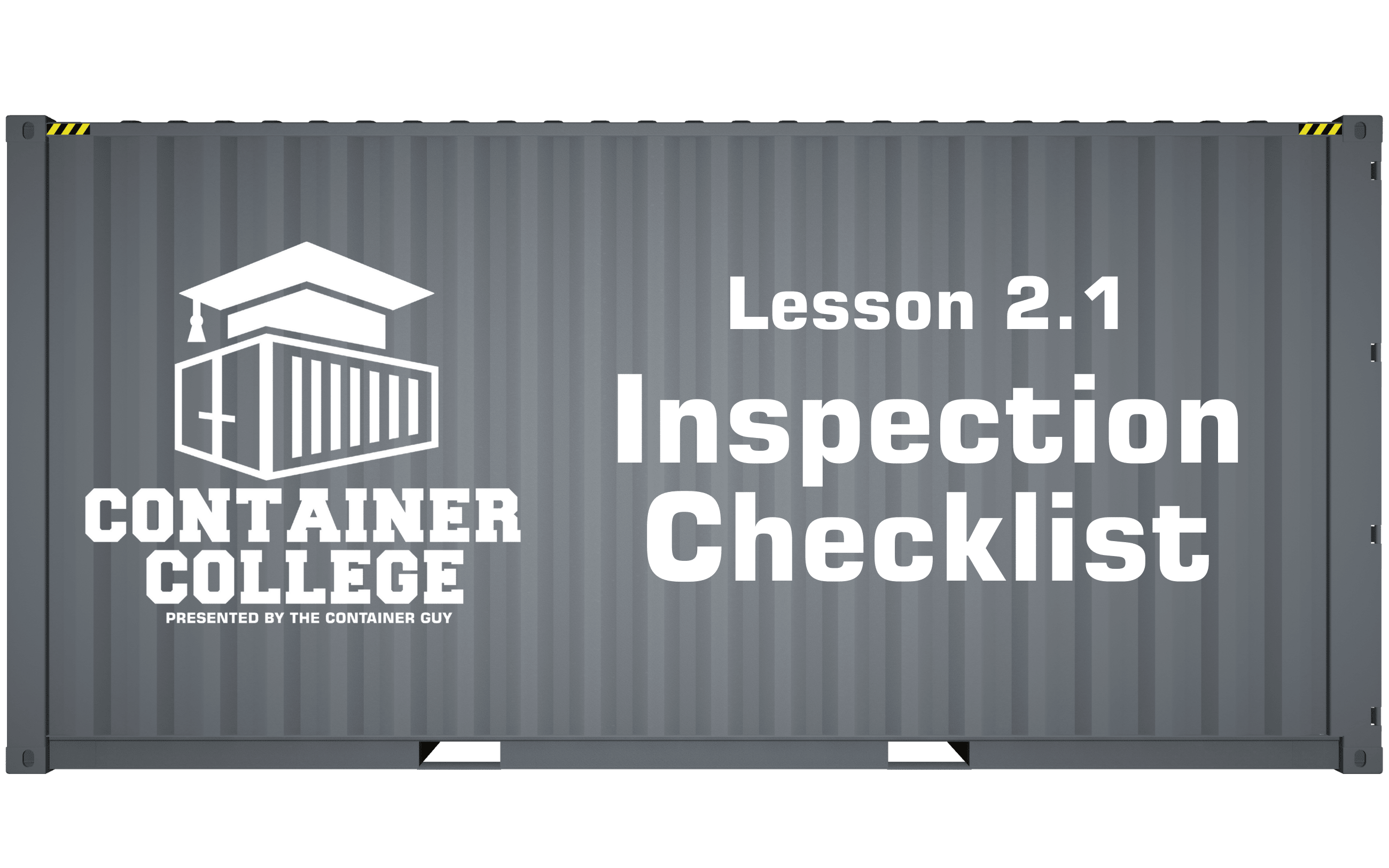
Before you modify a shipping container, you need to make sure you’re starting with the right container. Even the best modification kits can’t compensate for a structurally unsound or badly damaged box.
That’s why we put together this Container Inspection Checklist as part of The Container Guy College. Whether you’re buying a new one-trip unit or a used WWT container, knowing what to look for can save you time, money, and headaches down the road.
Your Pre-Purchase Inspection Checklist
Use this checklist when buying a container, especially if you’re sourcing it yourself or inspecting a used unit.
1. Corner Castings & Posts
- What to Look For: No major cracks, bends, or missing material
- Why It Matters: These are structural points—damage here affects stacking, lifting, and overall integrity
- Tip: Our weldless bracket kits rely on proper corner alignment for installation—start strong.
2. Roof Condition
- What to Look For: Dents that collect water, deep rust, or pinholes when viewed from inside
- Why It Matters: Roof leaks can destroy flooring, insulation, or anything you store
- Tip: Even light rust can spread—get ahead of it with a patch and coat if needed.
3. Cargo Doors
- What to Look For: Smooth opening/closing, working locking rods, secure gaskets, and full seal contact
- Why It Matters: These doors are your primary access—warped doors make daily use a nightmare
- Tip: If you plan to swap the doors for a man door or roll-up, assess how easy that mod will be based on exthe isting condition.
4. Side Walls
- What to Look For: Large dents, excessive bowing, or corrosion that’s eating through the steel
- Why It Matters: Sidewalls are your surface for cutting in windows, vents, and doors
- Tip: Light dents are okay, but be cautious of corrugation damage near your mod points.
5. Flooring
- What to Look For: Rot, soft spots, oil stains, or chemical contamination (especially in used containers)
- Why It Matters: Most containers have 28mm marine plywood floors that are hard to replace
- Tip: If you're doing a clean build-out, consider sealing the floor or installing a new subfloor.
6. Understructure & Crossmembers
- What to Look For: Surface rust is fine, but avoid deep corrosion or bent supports
- Why It Matters: These beams hold your flooring in place and maintain load capacity
- Tip: If you're placing the container on blocks, uneven wear on the frame can cause sagging—inspect it for level.
7. CSC Plate (if applicable)
- What to Look For: Presence of a certification plate with readable info
- Why It Matters: Required if you’re planning to use the container for international transport
- Tip: Not needed for permanent structures or static storage—but good to have for resale value.
8. Light Test
- What to Do: Close all doors and inspect the interior for any visible light leaks
- Why It Matters: If you can see daylight, moisture, and pests can get in too
- Tip: Pay special attention to roof corners and door seals—these are the most common leak points.
For a video walk-through of the process, watch our YouTube videos here and here.



